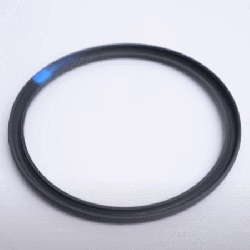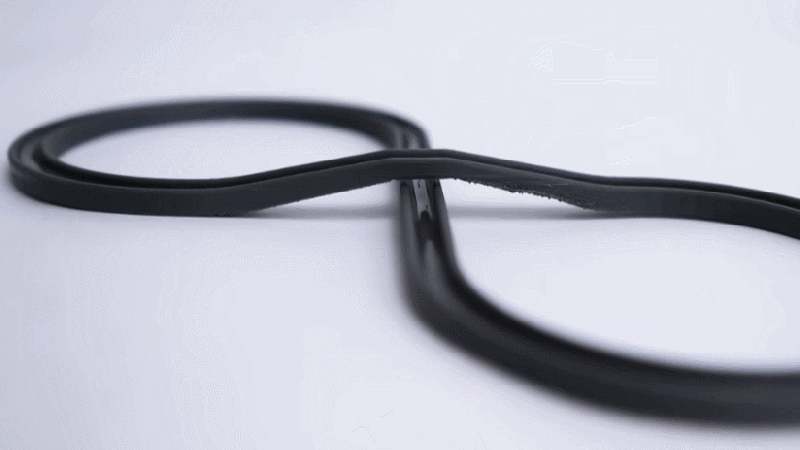[Steve Mould] came across an interesting little phenomenon of blue flames zipping around a circular track. This led to diving down a bit of a rabbit hole about excitable mediums, ultimately leading him to optimize the shapes and come up with some pretty wild variations which he shows off in a video (also embedded below.)
 After figuring out that the moving flame depended on combustion of fuel vapor in an environment that didn’t allow for the whole surface to stay lit at once, [Steve] tried to optimize the design of 3d-printed channels and raceways to encourage this effect, and he came up with some pretty novel ones. The 3D models are here if you’d like to try them for yourself (we especially like the “figure eight” and “rays” models.)
After figuring out that the moving flame depended on combustion of fuel vapor in an environment that didn’t allow for the whole surface to stay lit at once, [Steve] tried to optimize the design of 3d-printed channels and raceways to encourage this effect, and he came up with some pretty novel ones. The 3D models are here if you’d like to try them for yourself (we especially like the “figure eight” and “rays” models.)
The video is an excellent show & tell of everything [Steve] dove into, complete with plenty of demonstrations of harnessing this effect to create some nifty running flames. Check it out in the video below, and if unintuitive physical effects are your thing, don’t miss [Steve]’s peeling apart of the turntable paradox.















Is that ever neat, using a flame front for delays and oscillators. Should try add a polarized HV electrode and see what that does. Flame detectors rely on the rectification properties of a flame. A moving diode, next is logic gates…
Party stunt- I used to take flick a lighter at my terry socks and the lint would burn off, causing a flame front to slowly move around the entire sock for many seconds. Looks really neat and warms up your feet.
Had to be careful though, other clothes could light up like your fuzzy shirt and then it’s heading up to your hair. You should not be drunk when doing this.
Tried the circle one printed in PLA and couldn’t get it to work. I used Ronsonol lighter fluid (yellow bottle) so not sure what type lighter fluid he is using but definitely could not get it to work. Still a very cool demonstration!
Ambiant temperature and altitude are to be considered in this setup.
Meaning?
99% sure he uses zippo lighter fluid in the video.
Something that wasn’t addressed and might be important to getting it working is print quality & technique, he uses an FDM printer so there could be some effect caused by the tiny ‘grooves’/’steps’ in the print that are not actually part of the model, so make sure to print it with the same style of printer and maybe try a few different layer heights if the different lighter fluid doesn’t cut it.
Or make several circles with different widths to test which one works best for you.
Ronson & Zippo lighter fluids are both naphtha. Zippo owns Ronson anyways.
As @Tweepy says, probably temperature related so maybe try something with a lower flah point like turpentine.
Well naptha isn’t quite as specific as you can possibly get. This isn’t a great source, but it aligns with what I remember hearing, which is that Zippo fluid is a blend of light products and Ronson may or may not differ. https://www.reddit.com/r/Zippo/comments/b0hxiv/info_alternative_fuels/
Yeah, naphtha / paraffin / white spirit / thinners / lighter fluid / etc etc may or may not be the same thing depending on where you live.
I doubt Zippo & Rronson lighter fluids are different though. Their formula has probably varied over the years.
Has anyone duplicated this? I printed the circle twice in PETG (0.15mm and 0.3mm layers, 0.4mm nozzle), used Ronsonol, and both just lit up the whole circle (about 70F ambient, maybe 500ft alt). Zippo fluid arrives Wednesday; if I can’t make that work, I’ll probably give up rather than collect more fluids. Very cool though.
Okay, it *can* work. I was putting too much fluid (Ronsonol) in it. Just a few drops, enough to wet the bottom of the channel tipping the ring around was the trick for me. Best it did was about 10 laps around – mostly, it does a bidirectional half-lap and goes out, or one side goes and it makes a lap then goes out, things like that. Imperfections in the print are killers; the flame likes to stop there and melt/burn the PETG. After playing with mine for about 10 minutes it’s too melted to work anymore. So, the 0.3mm print just burned up (too much fluid), and the 0.15mm print worked to varying degrees for a while using less fluid – I don’t know if the layer height mattered or not.
I saw the video a few days ago and printed my own. Same results with Ronsonol. No pulse of flame but it did make a nice fire that was tricky to put out.
Another similar party trick.
Put 1/8 cup of alcohol and water into an empty (Except for air) water cooler bottle, shake up and coat the sides, drop a match into the neck.
If you are lucky, a blue and orange flame front will travel slowly from top to bottom. If more lucky, the cooling up top will cause air to be sucked in, and the bottle will oscillate as it chuffs few times.
In the 70’s we called this a whang, because the first chuff made that sound.
Recreational medication helped.
Usual disclaimers — don’t try this at home.
If your whang feels like it’s on fire, you should probably see a doctor.
We used to do something similar with ” empty” bottles of Everclear.
Now make logic gates out of them and build a fire computer.
Well, I came here to share that maybe some tesla valves would prevent fire from travelling in the wrong direction… but I acknowledge you bested me, sir.
Seems like something that could be used to make Petri nets. Maybe?
The youtube comment doesn’t take into account the amount of time it would take for the forest to regrow. The fact that a new fire could start annually is also irrelevant, as that would not be what determines the rate of fires traveling around the circle. What would be relevant is the amount of time any given part of the forest takes to go from being on fire to regrowing back to the state it was before the fire, which if we assume a solid enough forest to carry this big fire easily, would be more like 20-30 years, not 1 year.
A Metafilter thread pointed to this 15 year old video: https://www.youtube.com/watch?v=I1ultF_JeIo&t=57s showing the same effect.
Hair mousse of all things, high alcohol content is the key.